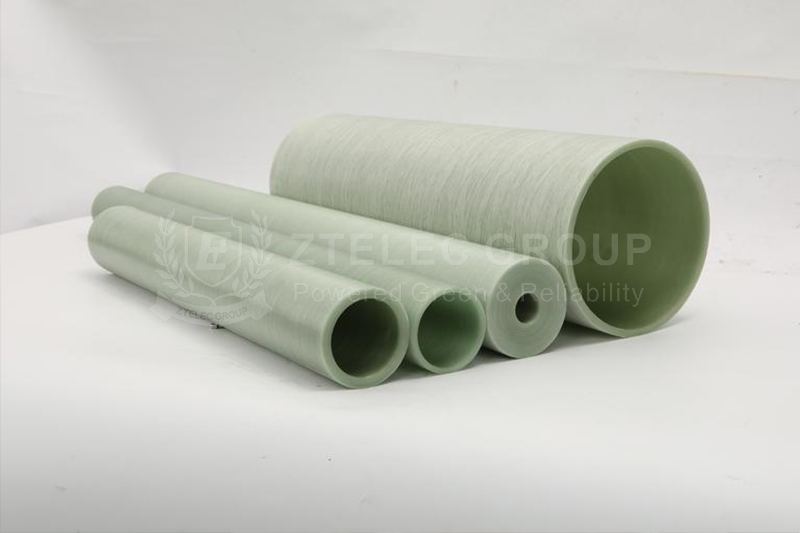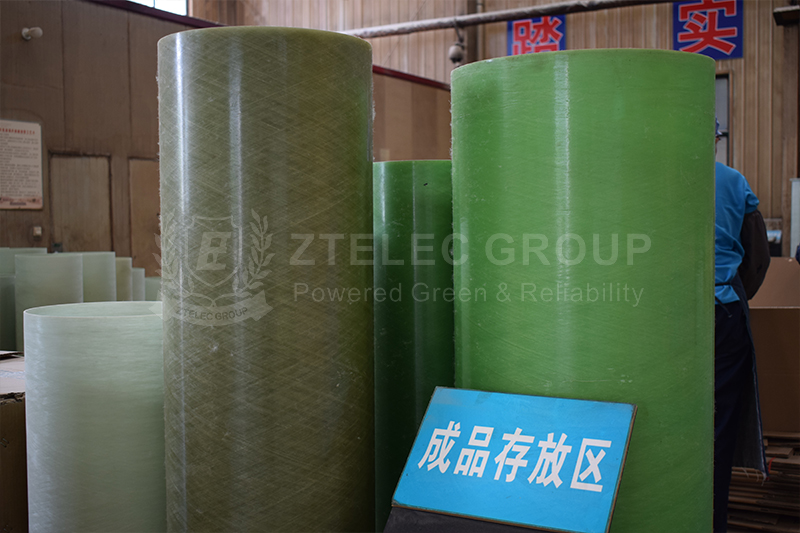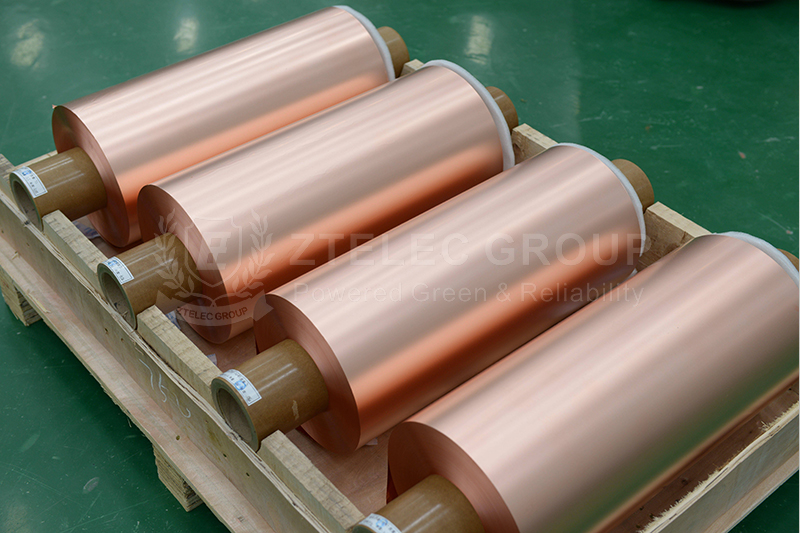In lithium battery production, copper foil core tube is the core component of battery core forming. Once the copper foil is deformed during winding or subsequent processes, the battery performance and safety will be threatened. Therefore, it is necessary to ensure the quality of copper foil winding from four aspects: copper foil core tube design, manufacturing process, operating specifications, and environmental equipment.

Copper foil core tube is composed of resin matrix and reinforcing fiber, and its performance is related to the quality of battery cells. If the humidity in the production workshop is high, it is recommended to select hydrolysis-resistant vinyl ester resin as the matrix. This can prevent the resin from absorbing water and swelling, and avoid deformation of the core tube affecting the copper foil. In terms of reinforcing fiber selection, carbon fiber has high strength and high modulus, which is suitable for high-end lithium batteries. This type of battery has strict requirements on battery cell consistency. Glass fiber has low cost and is suitable for cost-sensitive battery production.
Increasing the wall thickness of the copper foil core tube can improve the ability to resist deformation, but it will increase weight and cost. For example, when producing high-energy-density batteries, if the copper foil is thin and the number of winding layers is large, the wall thickness can be increased by a few millimeters. In this way, the copper foil core tube can remain stable under tension and pressure. In addition, spiral or annular reinforcement ribs are set inside the copper foil core tube to disperse stress and further enhance the structural strength.
Friction coefficient control: The friction coefficient between the tube and the copper foil is critical. If the friction coefficient is too small, the copper foil is easy to slide, resulting in loose winding. If the friction coefficient is too large, the surface of the copper foil may be scratched. Therefore, pay attention to the control of the friction coefficient so that the tube can be both wear-resistant and stable.
Surface roughness control: Appropriate roughness can increase the contact area and prevent the copper foil from shifting. However, too high roughness will damage the copper foil.

Parameter optimization setting: Winding tension is the key. If the tension is too large, the copper foil will easily break. If the tension is too small, the copper foil will relax. The tension needs to be set according to the thickness, material and battery design requirements of the copper foil. At the same time, the tension sensor is used for real-time monitoring, and the tension is kept stable through the automatic control system.
Gradient change management: At the beginning and end of winding, the method of segmented tension control is adopted to avoid stress concentration and prevent copper foil deformation.
Reasonable speed matching: The winding speed should take into account the factors such as the diameter of the tube, the material of the copper foil and the tension. Generally speaking, for a copper foil core tube with a diameter of 100-150 mm, the winding speed is controlled at 1-2 m/s and must be kept stable.
Alignment accuracy guarantee: The alignment accuracy of the copper foil affects the performance of the battery cell. The laser centering system can be used to monitor the position in real time, and the error can be controlled within ±0.1 mm through the correction mechanism.
Operators must strictly handle and place with care. When handling the tube, use a special clamp or tray to ensure uniform force. Place the copper foil core tube steadily to avoid uneven force. At the same time, set up a feeding tension limiter to prevent excessive stretching of the copper foil.
The operator should closely observe the state of the copper foil. Once wrinkles, warping and other abnormalities are found, stop the machine immediately for investigation. Establish a data recording system, regularly analyze key parameters, and optimize the process.

The temperature of the lithium battery workshop should be controlled at an appropriate temperature. If the temperature is too high, the copper foil core tube is easy to deform and the copper foil is easy to become brittle. The humidity should be maintained at 40% – 60% RH. If the humidity is too high, the copper foil is easy to oxidize. If the humidity is too low, static electricity is easy to adsorb dust. Air conditioners, dehumidifiers and other equipment can be used for precise adjustment.
Regularly check the mechanical, electrical and control systems of the winding equipment. For example, lubricate bearings, detect sensors and deviation correction mechanisms. Regularly calibrate the equipment accuracy to ensure that the tension sensor error is within ±1% and the alignment detection device error is within ±0.05 mm.
If you need our products please write down any questions, we will reply as soon as possible.
There are three ISO certificates for quality certification. The certificates will be shown later. ISO
After receiving the advance payment, the production cycle is 15-25 days. And the transportation cycle should be calcul……
We supply with installation guide and user manual for each transformer. If you do not understand them. We will offer v……